What would you pack to go on an inner journey; wandering to the deepest part of yourself you’ve long forgotten, a strange terrain and unfamiliar territory you don’t even know existed; crossing that bridge between memories and things buried underneath—a magical place from where your soul is calling you; have always been calling you?
“There is no greater agony than bearing an untold story inside you.”
—Maya Angelou
INTUITIVE JOURNALING FOR SELF-DISCOVERY
During my university days, I bumped into WILD MIND by Natalie Goldberg, a book about writing for writers. Little did I know that this book would change my life.
It is from this book that I got introduced to free-writing, a technique to beat procrastination and inner critic by performing a timed writing practice and just write as fast you can, without stopping, without thinking, without editing.
This technique allowed me (as an aspiring writer back then) to fill notebooks upon notebooks with dialogues, characters, story ideas, descriptions, settings, anything. All in all, these notebooks have become my endless source of writing inspiration.
Since I have a habit of writing journals (since I was 6 years old), I decided to experiment by using the same technique to document my days, thoughts, and experiences. I would grab my journal and write as fast as I could (usually in bed), and poured whatever thoughts that crossed my mind until I was tired.
It wasn’t until 11 years later when I found myself studying and practicing meditation, that I connected the dots.
One day, I gathered all my journals from the last 11 years and read them again: all those pages filled with tears and laughter, angry scribbles, and joyful handwriting. Amidst all those chaotic scrawls, I found messages, words, or sentences that jumped out of the pages because they sounded so ‘foreign’. Not in a bad way, but in a way that surprised me. “Did I write this? How was it possible that I came upon such knowledge, such wisdom, such revelation?”
Rereading my journal pages throughout the years allowed me to discover something new about myself. It gave me the ability to connect the dots: why I have certain fears, why I hate my body, why I have certain beliefs about money or success, why I have a significant amount of self-doubt, why I do not want to show my weaknesses, why I have the tendency to be a people pleaser.
The insights I got about myself and my life from reading those journal pages were breathtaking!
From this moment on, I started experimenting and combining the things I’ve learned about meditation, mindfulness, and self-development with Natalie Goldberg’s free writing technique. I used this combined technique to fill my journal pages: to find out more about myself, to make decisions, to find some root causes of my problems or beliefs, or at times, simply to clear my mind. I called the practice “intuitive journaling” because I believe that when we’re so deep in our writing or journaling practice, our intuition can speak to/through us.
Intuitive journaling helps you to explore your inner wisdom and intuition through writing and journaling. The aim is simply to peel the layers of your own lives and listening to the messages it delivers.
— Hanny
A few years ago, I started sharing this practice with my close circle of friends, and through my social media accounts. Invitations to facilitate semi-private workshops followed right after, where I led participants through an intuitive journaling practice.
Major life (and location) changes that happened last year, however, made it difficult for me to set a fixed schedule on when I would be able to facilitate another intuitive journaling workshop. Thus, this year, I decided to bring these workshops online. I will share the tips, techniques, prompts, practice, stories, and sessions about intuitive journaling so you can do it yourself, from wherever you are, whenever you feel the need to do it.
WHAT WE’LL NEED
- A space to write; ideally where you won’t be interrupted. A pen or pencil or any other writing tools that you like, will allow you to handwrite really fast.
- A journal/book is recommended, but a piece of paper is okay, too. You do not want a notebook that is too expensive or too precious, because you’ll handwrite in it fast and the results will be chaotic. Well, it’s going to look like a mess (a beautiful mess nonetheless); but you can rewrite some insights or passages you’d like to keep in a nicer notebook later.
- A kitchen timer or anything that can function as a timer. A mobile phone can come in handy as it has an alarm clock and a timer, but make sure it won’t be a distraction.
- A bottle of water, or tea, or juice. For some reason, intuitive journaling sessions will make you thirsty.
- A willingness to follow the steps and rules throughout your intuitive journaling session, an open heart, and an open mind.
THE STEPS
 EMBRACE OUR SPACE
EMBRACE OUR SPACE
We can do intuitive journaling wherever we are. We only need to make sure that we can embrace the space we’re in, fully.
This space can be a physical space: our room, the coffee shop, the bus stop, or an office cubicle. Embrace our physical space, by sending gratitude towards the place and appreciating its beauty, no matter how small. Even places that seem ugly or disorderly on the surface are beautiful. If we find it hard to see or feel the beauty of our physical space, we can add some things we consider beautiful to this space: a picture of a loved one, a favorite candle, a faint scent of our go-to essential oil blend, or a green house plant. Appreciate how these things complement our physical space.
This space can also be a mental space. It can be connected to our thoughts, our feelings, or our emotions. Embrace whatever thoughts, feelings, or emotions we are having. Respect these thoughts, feelings, and emotions by accepting them as they are, without trying to judge, label, or push them away. Thank them because they are helping us to understand ourselves more and they help us grow.
“Your space includes your physical, mental, and spiritual space.”
— Hanny
This space also includes a spiritual space: a space for power much greater than ourselves, for our spiritual or religious beliefs, and our inner guidance and intuition. Embrace this space by allowing them to protect and assist us throughout the process, for instance by saying a prayer, chanting sutras, or meditating.
___
 SET OUR INTENTION
SET OUR INTENTION
The next step is to set our intention for our intuitive journaling session.
We can set our intention by saying, “I set my intention for this intuitive journaling session to … “; followed by our intention.
However, it is best to be open when setting our intention instead of trying to push our agenda.
For instance, instead of saying, “I set my intention for this intuitive journaling session to show me why X would be the right career path for me.”, it is better to stay open by saying, “I set my intention for this intuitive journaling session to show me what I need to know about this career path,” or “I set my intention for this intuitive journaling session to discover the things I need to know about this career path.”
“Be open when setting your intention. You do not want to push your agenda.”
— Hanny
Instead of saying, “I set my intention for this intuitive journaling session to show me how I can get into a relationship with X.”, it is better to say, “I set my intention for this intuitive journaling session to show me how to move forward,” or “I set my intention for this intuitive journaling session to show me what I desire from a relationship,” or “I set my intention for this intuitive journaling session to show me what would I do if I love and respect myself.”
By being open with our intention, we are allowing ourselves to loosen our grip and flow. When we’re not sure how to set our intention, we can always say, “I set my intention for this intuitive journaling session to show me the things I need to know at this particular moment in life.”
___
 WRITE OUR THOUGHTS
WRITE OUR THOUGHTS
Set our timer to 5 minutes.
For 5 minutes, watch and follow our thoughts and write them down as fast as we can. Write them down as they are, as strange as they are, as random as they are, as weird as they are, as chaotic as they are.
Our task is simply to watch and record these thoughts by writing them down. We do not label them, judge them, analyze them, or question them. We allow them to appear, we notice them, and we write them down.
Think of it as a writing meditation. In meditation practice, we learn to watch our thoughts. The practice is not about emptying our thoughts and making it sterile from any thoughts, but it’s more about watching our thoughts as they come, notice their presence, and let them go.
For 5 minutes, follow our thoughts, no matter what comes up, and pluck these thoughts from our minds and write them down in our journal.
“Follow your thoughts as they wander, pen on paper. Follow them wherever.”
— Hanny
The key is to do this practice by writing as fast as we can, without lifting our pen from the paper. Write without pausing, without stopping, without erasing, without hesitating. Move our hands as fast as our thoughts; as they will keep coming and going, and changing, and reappearing.
We may write something like, “I don’t know what to say, I’m hungry, I don’t want to go to work tomorrow, oh, I have to pay my insurance, damn, what is that on the table, why my mind is like this…” Go on. It’s good. Keep writing them down until the time is up.
___
 START OUR INTUITIVE JOURNALING SESSION
START OUR INTUITIVE JOURNALING SESSION
Set our timer to 5, 7, 9, or 11 minutes.
We can start our intuitive journaling session by asking an open question related to our situation, or by using some journaling prompts: “Why it is so difficult for me to move on?” or “How can I feel more confident?” or “Why I keep repeating the same pattern in my relationship?” are some sample of questions we can ask to begin our session. When we do not have any particular question, we can select a journaling prompt that speaks to our hearts. Search for “journaling prompts” on this blog to spark some ideas.
Once we have a question or a prompt to work with, we can start our intuitive journaling session. With the question or the prompt in mind, start writing as fast as we can, following the first pop of thoughts, words, or sentences in our mind.
“Ask the question and let your intuition and inner wisdom guide you. Trust the process and stay open.”
— Hanny
Be discipline to simply follow wherever our mind goes, the way we did during our writing meditation practice. When we feel as if we’ve strayed too far, glance at the question or the prompt for a second, then start writing again by following whatever crossed your mind.
Keep our hands moving as fast as our thoughts. Follow that urge to write certain words or sentences even if we think it’s not true, ridiculous, or makes no sense. Surrender to the way our thought and our hand moves. Let things flow and trust our process until the time is up.
When we’re pausing, stopping, or hesitating, we won’t be having an optimal intuitive journaling session.
___
 CREATE OUR MANTRA
CREATE OUR MANTRA
When our session is finished, express our gratitude. Thank ourselves for taking this time to get in touch with our inner selves. Then, scan our handwriting on the page quickly, and highlight any words or sentences that ‘jumps’ out of the pages, that instantly catch our attention.
Do not think too much when performing this task. As always, trust our intuition. Do not meticulously hover around one sentence for a long period of time, or consciously trying to choose a sentence that we think will sound great; or smart.
Just follow our instinct and highlight the first few words that stir something inside of us.
If we find a message that speaks to us and lifts us up, for instance Just go for it, or follow your heart, or don’t worry too much. We can rewrite it on a post-it note or set it as our phone wallpaper, to act as a mantra: a reminder.
Keep or repeat the mantra to ourselves as much as we like, or meditate with it until we feel the message resonating in our hearts. When it’s time, appreciate your gratitude for this message, and let it go.
“Certain words and sentences would jump out of the pages of your notebook: your mantra.”
— Hanny
If the things that catch our attention are something that weighs us down or makes us feel tense, for instance, I am so afraid of X or I am not sure I can do this or I hate X, it’s okay, too. Accept that these are the things that have absorbed our attention at the moment.
What we can do next is rewriting these sentences by framing them into an open-neutral question instead. For instance, What would I do if I am not afraid of X, or What is possible if I am sure that I can do this, or What can I do to be better at this?, or How would my life change if I do not hate X?
We do not need to answer this question. This question can be our mantra, too.
***
Now that you’ve learned the steps of intuitive journaling, if it resonates with you somehow, I would be happy if you give it try. Feel free to reach out and let me know about your experience. Is it difficult or challenging? How do you feel? Do you stop writing midair? What do you find exciting? What surprise you? What do you discover or learn about yourself, your mind, and your memories?
In the next few days, I will be back with more intuitive journaling tips, techniques, and prompts, so you can practice during your downtime or creative hour. Oh, I will also share some journaling prompts via my Instagram stories; so feel free to connect if you’re on the platform!
For the time being, happy journaling!
________________________________



 EMBRACE OUR SPACE
EMBRACE OUR SPACE SET OUR INTENTION
SET OUR INTENTION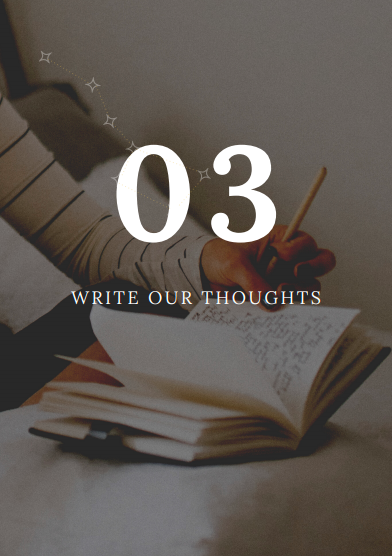 WRITE OUR THOUGHTS
WRITE OUR THOUGHTS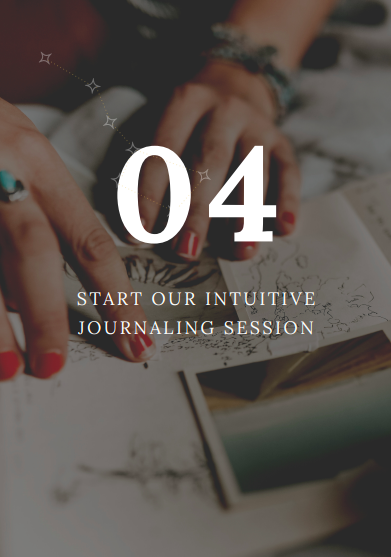 START OUR INTUITIVE JOURNALING SESSION
START OUR INTUITIVE JOURNALING SESSION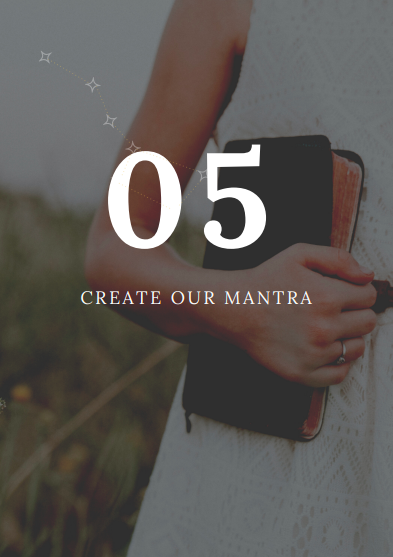 CREATE OUR MANTRA
CREATE OUR MANTRA

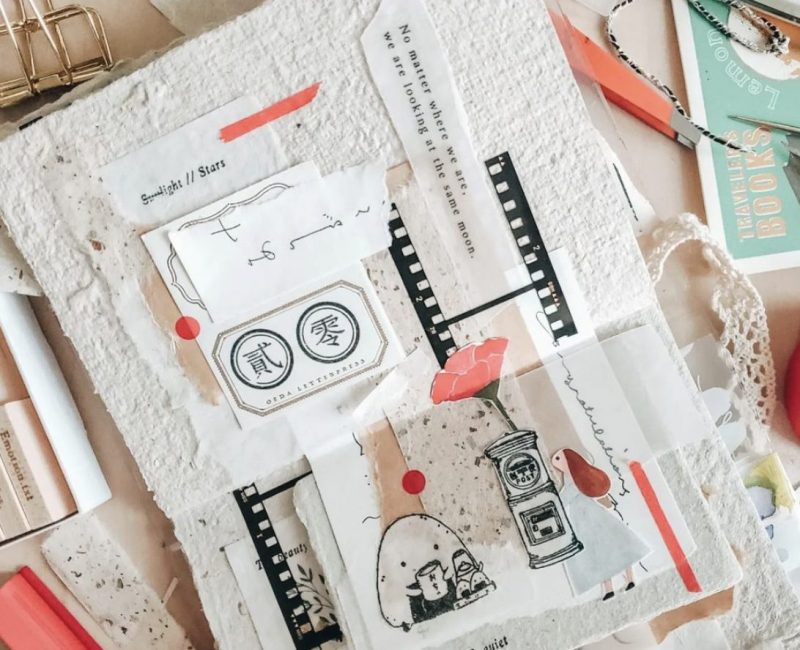

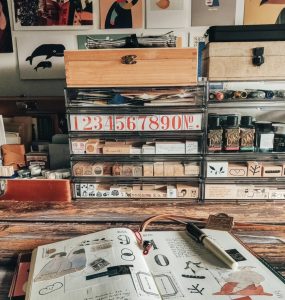

4 Responses
Hi
Hi
Hi
hi!